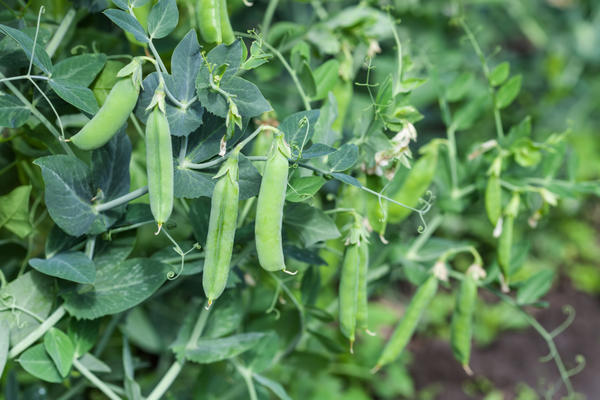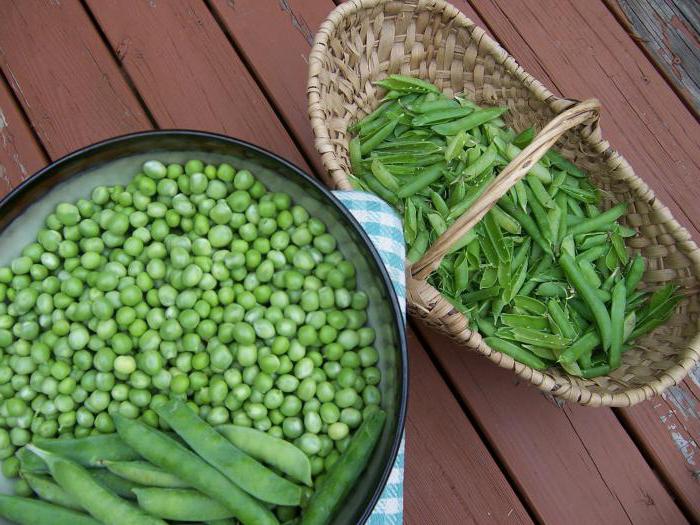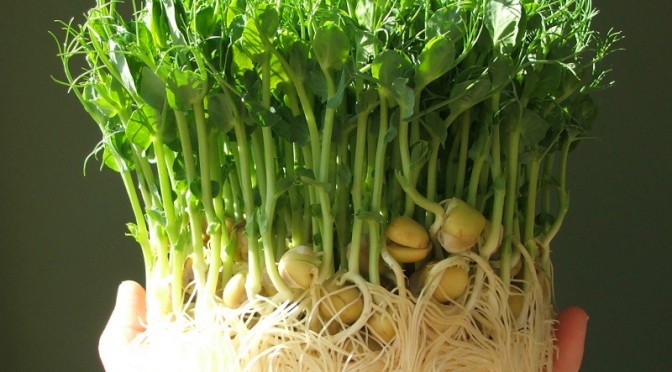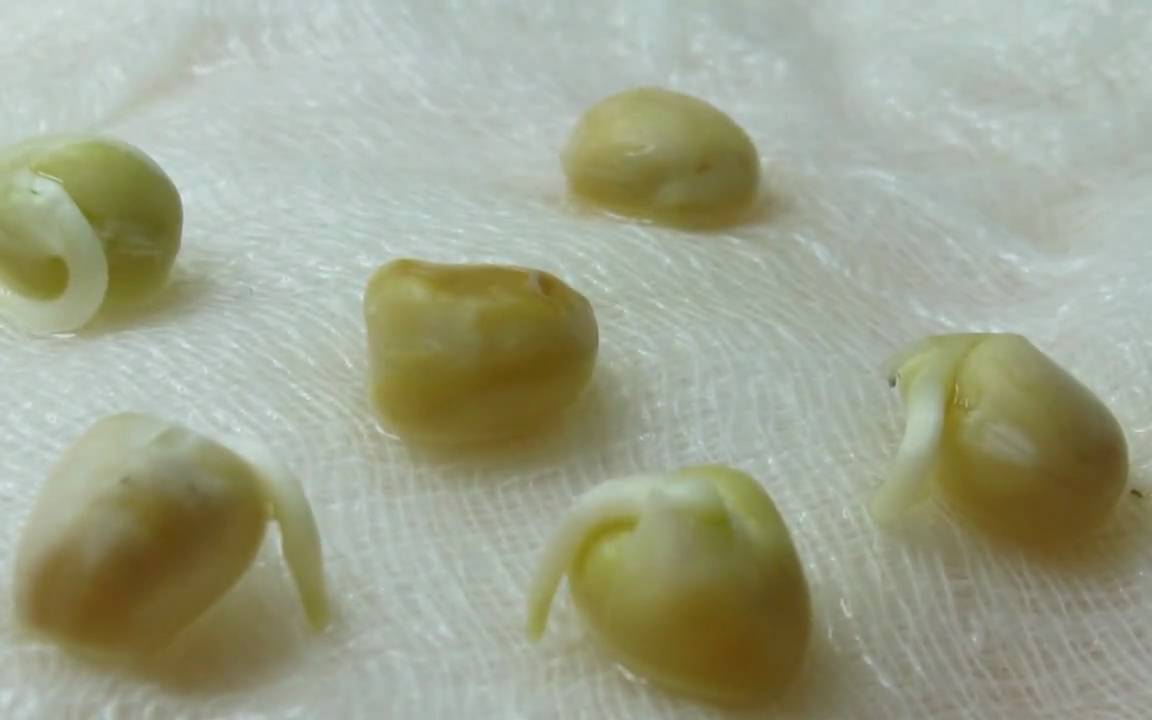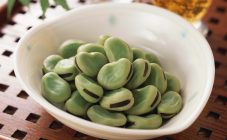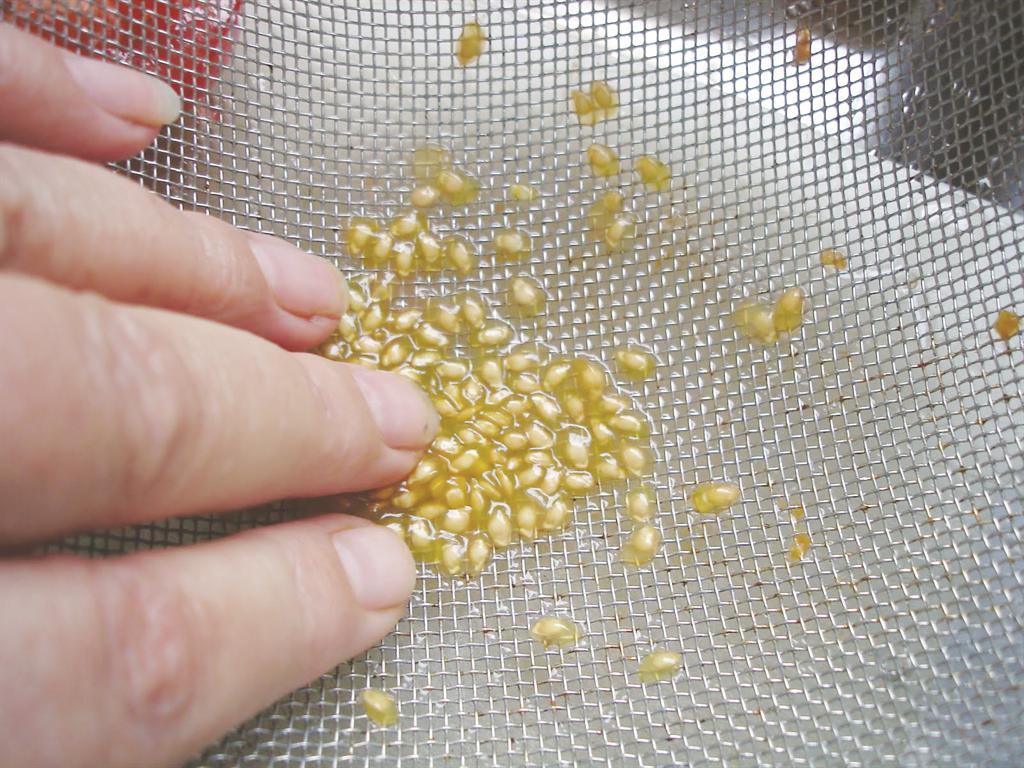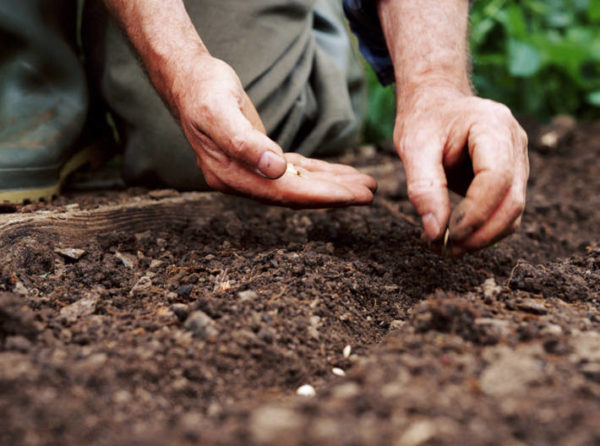Content:
Rich in vitamins and minerals, peas are highly prized by children and adults. It contains a lot of vegetable protein, just like beef. The content of vitamins of groups B and C, phosphorus, iron, carotene is important for people suffering from cardiovascular diseases.
Description of culture
The plant belongs to the legume family, therefore it has the ability to enrich the earth with nitrogen. Bacteria (azotobacter and nodule bacteria) develop on the roots, which recycle nitrogen from the atmosphere and then saturate the earth with it. This feature of legumes has a positive effect on the development of other plants.
Peas have a herbaceous stem. It can be simple or branched. The branched stem reaches a length of up to 2.5 m. There are varieties that have a small height up to 60 cm. Branching ones are well suited as a decorative decoration for a gazebo, balcony, terrace.
Flowers are white or purple in color, similar to moths, are in the leaf axils in the amount of 1-2 flowers. After sowing, flowering occurs at the age of 40-55 days. The appearance of the first peduncle in early ripening varieties occurs in 7-8 leaf axils from the root, in late maturing varieties - in 15-20 axils. The frequency of the appearance of peduncles is 1-2 days. Self-pollination and cross-pollination is possible.
Conditions for growing peas
When choosing conditions for growing, attention is paid to the location of groundwater. Green peas love moisture. It is necessary for the amicable emergence of seedlings, the rapid development of the plant, the ripening of buds and flowering. With a lack of moisture, the plant will shed flowers and ovaries.
If the groundwater is high, it will be bad for the plant. It has a powerful root system that feeds on groundwater from deep layers. Seeds germinate at +5 degrees and withstand frosts down to -6.
The soil for planting should not be acidic, otherwise it needs to be limed. Light fertile soil and loam, rich in humus, are excellent.
Selected and germinated seeds must be planted in grooves, the distance between which is 20 cm. The optimum distance between plants is 10 cm. The seeds are brought into the ground to a depth of 8 cm. 20 g of peas are sown per 1 square meter.
A few days before sowing, pea seeds must be treated with drugs against root rot and worms, for example, Fundazol.
The plant is unpretentious in care, which consists in weeding, watering, protecting seedlings from birds, and harvesting.
Watering is mandatory and regular, per 1 sq. m. should account for up to 10 liters of water. For feeding, you can use a nitroammophoska. To do this, add 1 tbsp. l. preparation for 10 liters of water. Loosening and hilling will have a good effect on the plant. In order for the peas to grow vertically, a support is installed. A metal mesh with large cells, pegs with a thread stretched between them and other devices are suitable for her.
A month after flowering, the crop is harvested.Regular harvesting stimulates the growth of peas, because the plant is a multi-harvest crop.
If the purpose of planting is to get ripe seeds, the fruits are left on the bushes until they are fully ripe. After that, the plant is cut, collected in small bunches and left to ripen in the house for 2 weeks in a well-ventilated place. Seed germination lasts 2 years.
In addition to a rich harvest, the plant is a good fertilizer. To do this, the tops are laid in a compost heap, and the finely chopped roots are buried in the ground.
Diseases and pests of peas:
- Pea moth or leafworm. The pest hibernates in the soil and flies out when spring comes, at the moment the plant begins to bloom. Spraying with infusion from the tops of tomato or garlic will help to fight the moth. To obtain a solution of tops, take 3 kg per 10 liters of water. Tincture of garlic is prepared according to the recipe. 20 g of chopped garlic is infused in 10 liters of water for a day.
- Powdery mildew. A tincture of sow thistle will come to the rescue: 300 g of plant leaves are used in a bucket of water, the solution is infused for 12 hours. Spraying is carried out twice at weekly intervals.
Soaking peas before sowing
Many gardeners are wondering whether it is necessary to soak peas before planting in open ground, how to soak peas before planting, and how much to soak peas. There is no definite answer. One half of the gardeners say that dry peas should be sown. Such sowing should be carried out in moist soil. Seedlings from such sowing will take a long time.
Soaked peas absorb up to 150% of their own weight of water. This moisture reserve is difficult to accumulate in the soil. Soaked hay planted in moist soil gives early shoots.
When dry peas are planted wet to a depth of 5 cm, the slow swelling of the seeds will increase the quality of the crop and the plant's resistance to temperature extremes.
When planting peas in summer, sowing hatched seeds is not suitable. Peas require a lot of moisture in summer. If the sprouts don't get enough moisture, they will die.
There are several ways to soak pea seeds:
- Soaking in water. The peas are completely filled with clean water at room temperature. They are kept in water for 12-15 hours, while the water is changed at intervals of 3 hours. After this time, the peas are slightly dried.
- Soaking in boiling water. The seeds are placed in a thermos of 45 degrees water for a couple of hours. After that, they are dried. Using hot water allows you to get seedlings a few days earlier than usual soaking.
- Use of boric acid solution. To soak the seed and disinfect them at the same time, use 1 g of boric acid per 5 liters of water. The seeds are kept for no more than 25 minutes.
- Special means for soaking. Biostimulants stimulate growth well, improve the immunity of future plants. Among the special compositions for soaking are Gumat, Epin, Nitragin. The soak time varies from 3 to 6 hours, depending on the preparation. Humate is a potassium salt that has an anti-stress and stimulating effect on seeds. Special products increase the yield, improve fruit growth, stimulate root growth, have a rejuvenating effect of plants, stimulating the development of lateral shoots, restore damaged stems, leaves, reduce the amount of heavy metals and pesticides.
When soaking beans, gardeners have a lot of questions. The most popular among them:
- Are seeds that have been processed by the grower soaked? This procedure is optional. If a decision is made to soak such seeds, then the procedure must be carried out carefully so as not to completely wash off the protective layer.
- How long should the sprouted roots be? For convenience, when planting, the roots are germinated by a couple of millimeters. If the roots are longer, they can be easily damaged during planting.
- Are very small seeds soaked? Some plants have small seeds. Such seeds should not be soaked; they must be sown immediately into the ground.
- Do seeds need to germinate very early? Do not do this, as the lack of sunlight will weaken the plant. Also, a cool environment can lead to root rot.
Seeds do not germinate or hatch poorly
What is the reason that seeds do not germinate well? This is possible in the following cases:
- seeds are old or improperly stored;
- the producer has released defective seeds;
- a lot of water was used during germination;
- the seeds are dry during the procedure.
Germinating pea seeds before planting
Another measure to accelerate pea germination will be seed germination. Many gardeners believe that this procedure can be performed if the threat of night frosts has passed. If the temperature drops to -1 at night, the sprouts in the ground will die.
Germination improves germination and yields.
To germinate seeds, you first need to calibrate them. With the help of calibration, you can determine the amount of poor-quality seed, from which the crop will not grow. In the process, large and medium-sized seeds are selected, containing good reserves of nutrients necessary for future plants.
A 5% salt solution is used for calibration. Dissolve 50 grams of salt in a liter of water. The seeds are soaked in the solution for 2 hours. Medium to large full-sized beans will sink to the bottom, while empty and small beans will rise to the surface. Small seeds are removed, the rest are washed and allowed to dry.
After calibration, the seeds are soaked. Each gardener chooses the soaking method for himself.
For proper sprouting of peas, you need to follow several steps:
- For germination, take a little more peas so that there is a small supply.
- Peas are washed with melted or settled water.
- The seeds are placed in a glass jar. When choosing a container, take into account that pea seeds increase in size several times during germination.
- The seeds are poured with cool water and mixed. The water should cover the peas. The container is placed in a warm place overnight.
- In the morning, the water is drained, the seeds are washed and dried. By the way, the water drained from the peas is well suited for watering indoor flowers.
- The seed container is placed in a dark place. The seeds should receive enough oxygen, so cover the container with a lid that has holes.
- After 12 hours, the seeds are taken out of the jar, washed and dried, and returned to the jar to their original place.
- In the morning, the washing procedure is repeated.
At this stage, the pea seeds begin to germinate. To obtain longer sprouts, the peas are kept in the jar, rinsing every 12 hours until the desired result is obtained.
Before planting, the peas are washed and dried well.
If it is not possible to immediately plant sprouted peas, it must be kept in the refrigerator for no more than a month.
Taking into account the rules of soaking and germinating seeds, you can increase the chances of getting a rich harvest.
